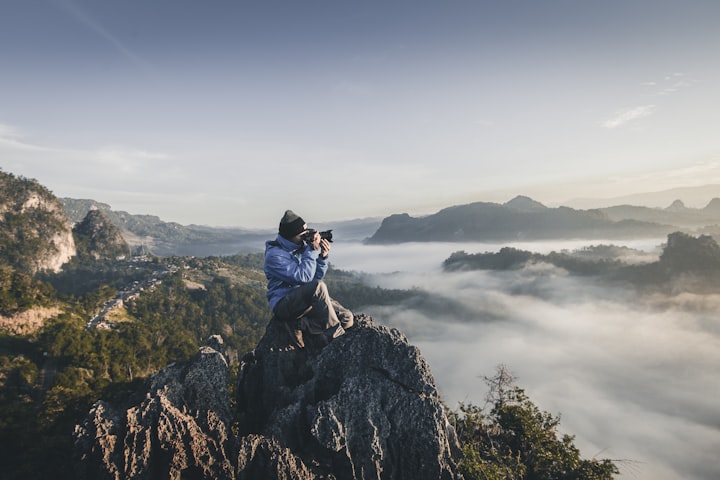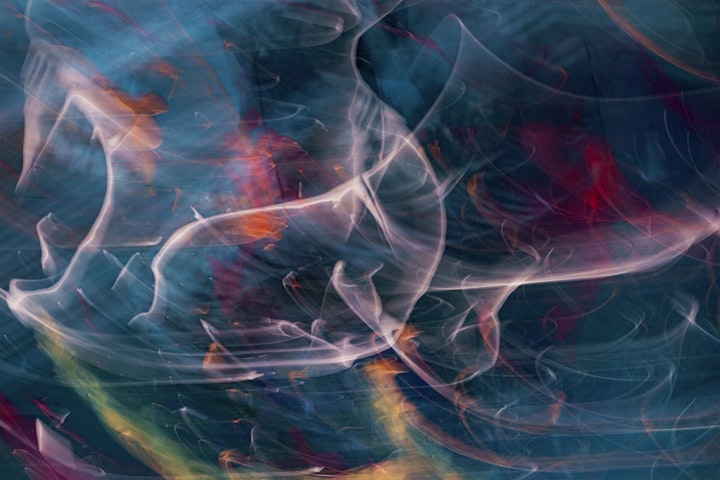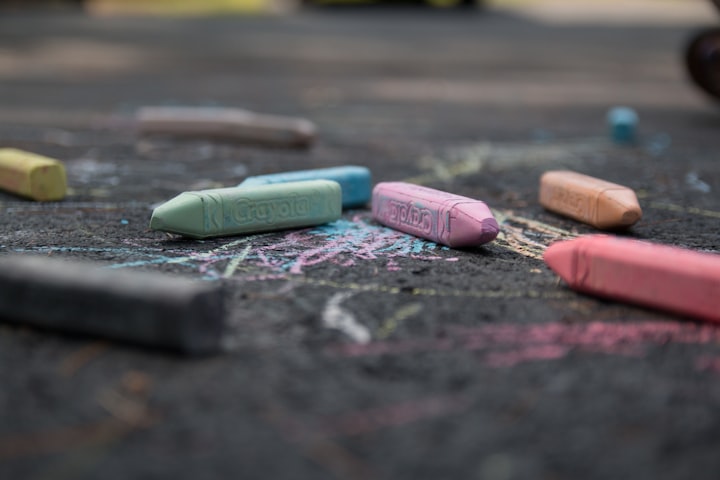Antoine D’Agata: Photography as an Affective Vessel
This is a paper (that is not without its flaws) that I wrote last semester. I was rather proud of it, so I figured I can post it.

French photographer Antoine D’Agata is universally recognized for his “taboo” predilections. Drawn to the Other, D’Agata seeks out subjects in dark corners of the world that First World society would likely deem inhabitable. Frequently compared to his mentors Nan Goldin and Larry Clark who adhere to similar mantras as D’Agata, he manages to stick out like a sore thumb in the mix of those he’s often likened to. This is heavily due to the transcendent nature of his work, which he asserts is typically driven by pure accidents and done with as little intention and direction as possible. Focusing on the depiction of the daily practices of the Other, may it be drug use, prostitution, sadomasochism, and so on, D’Agata uses photography as a direct engagement with the world, where the hierarchy between photographer/photographed is blurred, commonly throwing himself into the action. Through his insertion of himself in his works, he shatters the boundary that separates Artist from the Other.
A lifelong drug user, he has grappled with his addiction due to how intertwined it is with his work, though he sees it as a way to experiment and to truly connect with the situations and people that he photographs. D’Agata’s subjects seldom adhere to First World notions of what defines life and survival, and through his works, he outlines the aberrant parameters of human nature and primordial desire that contain the existence of the Other.
Marked by its viscerality, D’Agata’s photography takes to capturing frenzied sensations and movements as he and his subjects engage in drug use, sexual intercourse, or even as they experience the throes of withdrawal. Defying representation through his long-exposures, D’Agata’s work bears close affinities to Francis Bacon’s paintings. Both artists practice a method of disrupting the process of faciality through their focus on sensation, placing emphasis on the figural as they resist the figurative. Through these techniques, D’Agata poses photography as a powerful vessel of affective charge.
In Simon O’Sullivan’s The Ethicoaesthetics of Affect and the Bloc of Sensations, he offers strategies for subjects to be capable of accessing affect through Gilles Deleuze and Felix Guattari’s question of how to make oneself a “Body without Organs.” Deeming it as “a strategy for accessing that which is normally ‘outside’ yourself,” O’Sullivan claims that “sadomasochistic practices, meditation, drugs, and so on, all in different ways open up these molecular worlds.” (O’Sullivan 48)
Frequently vocal in interviews about his longtime drug use, this rings true to Antoine D’Agata’s photography methodology. In an interview with On the Road, D’Agata claims that “the essence of [his] job lies in the attitude of the photographer to what he photographs,” going on to state that he “never wanted to accept the position of the observer who is not involved in the situation.”
In an interview with Vice, he vehemently states that most photographers often “don’t take responsibility for their position while looking at the world and end up assuming voyeuristic, sociological or aesthetic stands.” To bring Larry Clark to the table, Clark is a strong example of this sort of aestheticism that D’Agata is referring to. Depicting the Other as well, Clark’s photographs often seem staged, designating his photographs as art objects, with endlessly crisp and fully polished exposures. With this intentional aesthetic, Clark as the Artist becomes voyeur to the Other, not an equal to. D’Agata on the other hand considers his personal way of going about the act of photography as a type of “ritual,” marked by “a certain solidarity, a closeness, a contact, a sign of recognition, a sign that we are not alone, that we are alive, that we share the same struggles.” D’Agata’s refusal to assume the position of observer that is not involved in the situation establishes a deep rapport with the Other and therefore escapes aestheticism and the designation of his work as mere “art object.” D’Agata’s ritual can be likened to O’Sullivan’s application of Georges Bataille’s notion of cave paintings as a “creation of a sacred space.” (O’Sullivan 48)
To go about this ritual and to enter the realm, or “sacred space,” that he photographs, D’Agata relies on the drugs (e.g. heroine, morphine, crack, as he “juggles” with his addiction) that are heavily intertwined with his life and his work. Keying this into the notion of the “Body without Organs,” D’Agata’s drug use allows him access to the affect that marks his work, self-aware of his habits as a means to “lose as much control as possible over [himself].” An example of this comes to the surface in the On the Road interview, where D’Agata fixates on a photograph from his Lilith series that depicts a table practically overflowing with all different types of narcotics. For his Lilith series, D’Agata spent seven months in a cramped room with a crack-addicted prostitute in Cambodia named Lilith. A sadomasochistic act in and of itself, D’Agata’s own bodily experimentation and self-destruction is depicted in the Lilith series, where D’Agata and Lilith are seen engaging in various scenes of ravenous sexual intercourse and drug use. This series wholly represents the visceral charge of D’Agata’s work and his means of making himself a “Body without Organs.”
In Simon O’Sullivan’s article, he also offers his take on Deleuze's personal articulation of affect. Bringing to the table Deleuze’s musings on Francis Bacon, O’Sullivan echoes Deleuze’s argument asserting painting “as the making perceptible of the imperceptible, as the making visible of affect.” (O’Sullivan 47) Applying this to D’Agata, his photographing of sensations, such as the orgasm or the highs and lows of drug use, endeavours to capture the micro-movements and bodily expressions that occur during these experiences.
Making use of long-exposures to capture these imperceptible features over a period of time, what often results in D’Agata’s photographs is a blurred rendering of the face and of male and female figures. A devout believer in the magic of accidents, D’Agata states in the On the Road interview that this blurring originally resulted from his drunkenness while taking photographs. Over time, he realized that this blurred effect could “give birth to a new stream in photography,” ultimately making it a common practice in his work. D’Agata’s photography allows for a radically different, deeply visceral aspect of reality to emerge that resists interpretation, much like in Bacon’s paintings, who practiced “the throw[ing] of paint from various angles and at various speeds.” (Deleuze 99-100) Deleuze argues in The Logic of Sensation that this act in and of itself gives rise to figurative givens on the canvas and in Bacon’s head. He states that these givens are ultimately eradicated through Bacon’s scrubbing or wiping away of defining traits of the human face and head, allowing for the creation of asignifying traits and the construction of a nonfigurative zone.
In Deleuze and Guattari’s A Thousand Plateaus, their chapter on the process of faciality states that “faces are not basically individual; they define zones of frequency or probability, delimit a field that neutralizes in advance any expressions or connections unamenable to the appropriate significations.” (Deleuze & Guattari 168) Deleuze and Guattari deem faciality as a machine that society sets for us, involving the idea of what should define a typical face. To key this into Bacon’s creation of asignifying traits and construction of a nonfigurative zone, his artwork disrupts the process of faciality, and similarly, this is evident in D’Agata’s motif of image haziness and blurring. Overcoming D’Agata’s photographs is pure catastrophe and the expulsion of control, giving birth to photographic marks, or “traits” as Deleuze puts it in regards to Bacon’s paintings, which are wholly “irrational, involuntary, accidental, free, random.” (Deleuze 100) Suitably calling them traits of sensation, Deleuze’s theories on Bacon work beautifully with D’Agata, who utilizes a nearly identical formula that is for all intents and purposes “figuratively pessimistic, but figurally optimistic.” (Deleuze 43)
D’Agata’s Lilith series constitutes a similar zone of indiscernibility between man and animal to Bacon’s work. With the Lilith series, D’Agata manifests various coupled Figures of man and animal particularly in the photographs that depict different positions of sexual intercourse. In these specific photographs, D’Agata completely resists any sort of figurative connotations, holding the figural renderings in staunch opposition to any discernible semblance of representation. Unlike Bacon, who takes to the figurative horror of his paintings to convey the horrors of the Irish, of war, and of the Holocaust, D’Agata’s photographs are far outside the realm of any connected representational objects or events. One photograph in particular from the Lilith series escapes all conventional description, rendering the bodies of himself and Lilith in an unconventional sexual position almost as a sort of singular unnatural creature. This photograph illustrates the threshold that his personal rituals allow him into non-human becomings. The series as a whole gives way to several different portrayals of becomings, particularly the "becoming-animal" and the "becoming-woman."
Harking back to Bacon, Deleuze states in The Logic of Sensation: “Meat is the common zone of man and the beast, their zone of indiscernibility; it is a ‘fact,’ a state where the painter identifies with the objects of his horror and his compassion.” (Deleuze 23) D’Agata renders Lilith as the beast; an unstable, dangerous woman, with inhuman desires fueled by her drug use; he and she coalescing through the meat/flesh of the body during sexual intercourse. Believing in women’s bodies “as a rampart,” D’Agata is seldom drawn to female subjects by arousal, but rather to the unstable ones “who have nothing to lose, nothing to sell.” It is these women who D’Agata sees to be prisoners of the same desires as him, focusing his lens on them in efforts to “[...] relearn a certain animality, brutality, violence, and of an intensity which has no place in normal society.”
Considering his ritual and O’Sullivan’s reading of the ritual as a form of becoming-animal, it is clear that his involving of himself in his photographs renders him equally as beast, slave to the same inhuman desires. To apply Deleuze and Guattari’s notion of becoming-woman in A Thousand Plateaus, they claim that women are minorities regardless of their number, asserting that becoming-woman “affect[s] all humankind, men and women both.” (Deleuze & Guattari 106) They go on to state that “minorities, of course, are objectively definable states, states of language, ethnicity, or sex with their own ghetto territorialities, but they must also be thought of as seeds, crystals of becoming whose value is to trigger uncontrollable movements and deterritorializations of the mean or majority.” (Deleuze & Guattari 106) This keys into the aforementioned photograph’s presentation of becoming-woman. Through its literal capturing of uncontrollable movements, one could posit that it displays Deleuze and Guattari’s ideas as it completely deconstructs a discernible division between man and woman, masculine from feminine, rendering the two as one unified Figure.
Additionally, D’Agata places emphasis in Lilith on the flesh of the body and its status as the sole material of the Figure. According to Deleuze, “the Figure is the sensible form related to a sensation; it acts immediately upon the nervous system, which is of the flesh, whereas abstract form is addressed to the head, and acts through the intermediary of the brain, which is closer to the bone.” (Deleuze 34)
Liza Griffen’s Making Bodies, offers multiple critiques on linguistic approaches to the fleshy body as a textual site. Positing a turn towards a more non-representational rendering of the fleshy body, she singles out Michel Foucault’s idea of “limit-experiences,” or extreme and profound pleasures that escape textual interpretation and have the potential to make or produce the body. Griffen argues that Foucault’s theory ignores “more quotidian performances, like dance, walking, or sex, that occur in the ‘now.’” (Griffen 6)
She goes on to claim that linguistic approaches to the body in social theory are insufficient as they do not acknowledge “embodiment,” or as she puts it, the notion that everyday practices work to configure our bodies, positing that “our bodies [stand] as the fleshy manifestation of practices, encounters and events.” (Griffen 7)
Ultimately stating that these “embodiments” can therefore not be theorized, this is rather cohesive to D’Agata’s figural displays in Lilith, embracing the corporeality of the body during performances of sexual intercourse and drug use. D’Agata ultimately manages to access affect through defying linguistic expression and resisting the figurative, as a series like Lilith is violently uncanny and corporeal.
Contentious through and through, D’Agata is no stranger to upsetting his First World audiences with his visceral work, though he sees a sort of pragmatism to this. All in all, D’Agata’s photography rituals serve as a means for him to meet the Other and to connect with their realm. In the spirit of Deleuze and Guattari, it is as if Antoine D’Agata has transcended representation through his ritualistic methods, uncovering a way to channel affective charge through his work as one could posit he magically photographs without the representative apparatus of the camera. Through these rituals, he absorbs himself into this realm of the Other with the spiritual goal of accessing the affect that marks his work. With his photographs, he pragmatically puts himself and the Other on display while sequestered in a sort of underdeveloped half-world that is ignored and typically forgotten by “normal” society in the First World. Through this display, he extends his deep-seeded displacement with First World society, establishing a solidarity with the Other as he assumes the role of alien Artist residing in First World.
In closing, with his utilizing of photography as a powerful vessel of affective charge, D’Agata simultaneously embodies his spiritual and psychological harmony with the realm of the Other, whilst also forcing a visceral recognition of this realm on the First World.





Comments
There are no comments for this story
Be the first to respond and start the conversation.